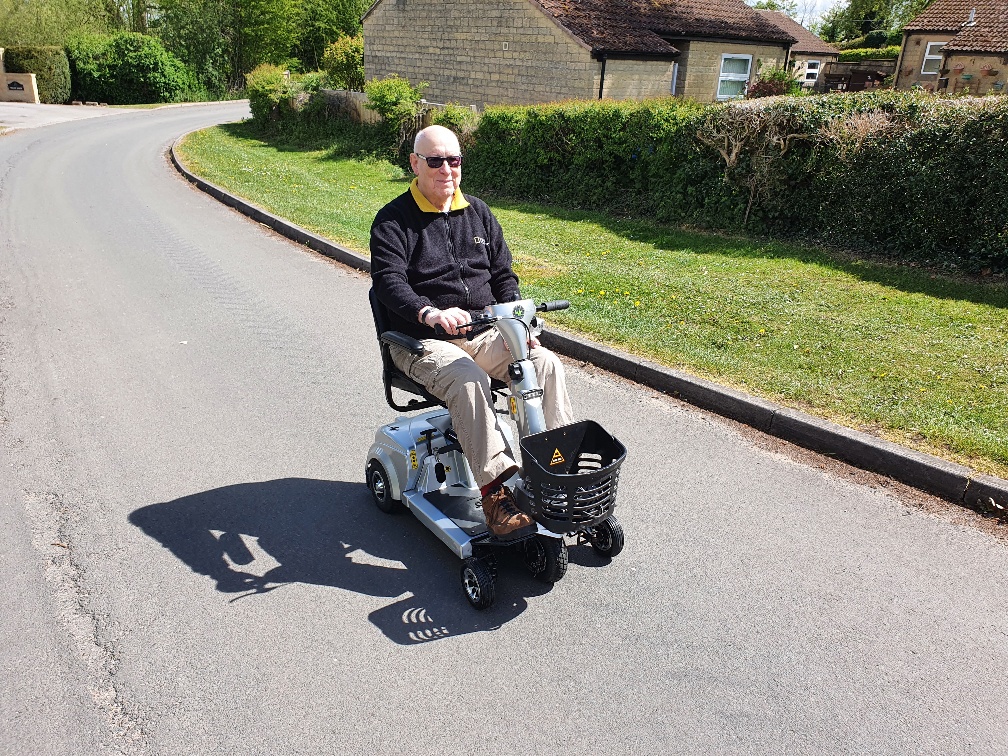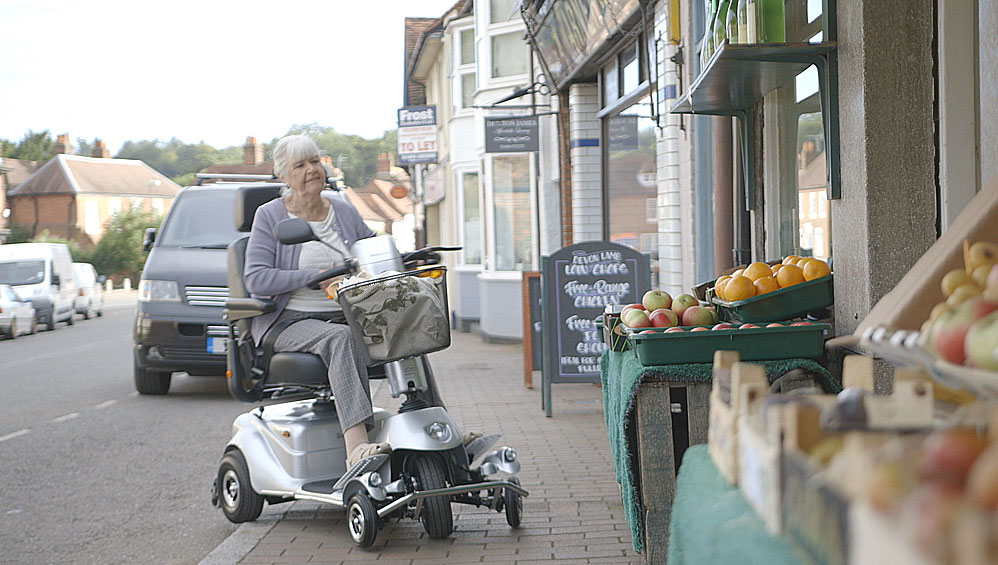Can mobility scooters go on the road?
One of the most common enquiries we receive is “Can mobility scooters go on the road?”
The answer is it depends on a number of factors and we will examine these in this article.
The first thing to address is there are two classes of scooters in the UK, both of which have completely different rules surrounding them and as to when, if ever, these mobility scooters can go on the road.
Class 2 Mobility Scooters
Class 2 scooters are supposed to only be used on pavements and paved areas and not on the road.
There are exceptions to the rules and in these circumstances these mobility scooters can be used on the road.
Reasonable use
Reasonable use is where the mobility scooter owner has no choice but to go on the road.
Where there is no pavement available such as country lanes.

Passing blockages on pavements such as inconsiderately parked vehicles or skips.
Crossing a road to get to your destination.
In all these scenarios the Quintell™ Tri-Wheel Steering and KerbMaster™ will keep you safe when descending or climbing any kerbs you encounter at up to a 45 degree angle.

Class 2 pavement scooters will often not feature lights as they are not legally required as they are not designed for road use.
However, all of the mobility scooters in the five-wheel Quingo range, whether intended to go on the road or not, come with lighting packages as your safety, and the safety of those around you, is our primary concern.
Class 3 Mobility Scooters
Class 3 mobility scooters can go on the road fully legally though they must meet strict criteria to qualify as a road legal mobility scooter.
Must be registered with DVLA and are assigned a vehicle registration though it is not a legal requirement to display a number plate.
Must be taxed though this currently cost nothing and is merely a formality.
All Class 3 scooters must include a fully functional set of lights.
This must include front and rear lights with reflectors and direction indicators that can function as a hazard warning signal.
An audible horn and at least one rear view mirror are obligatory.
Class 3 mobility scooters may even be used on dual carriageways, though use on motorways is prohibited, as long as an amber flashing light is clearly displayed and operational.
They must have a maximum speed of 8mph for use on the road but include the ability to manually switch to a mode restricted to 4mph for use on pavements and pedestrian areas.
They must feature an efficient braking system.
Our Quingo range offers a fully automatic, regenerative braking system which uses the energy created while slowing your scooter to recharge your battery like KERS in a Formula 1 car.
This system engages the moment the throttle is released offering added safety if for, whatever reason, you lose grip on the controls. This is supplemented by a back up manual braking system for added peace of mind.
When using a mobility scooter on the road you must adhere to all laws surrounding use of the roads and you are expected to observe the highway code.
12mph, 15mph and above
Any scooters that can exceed the 8mph speed restriction are not considered mobility scooters and can not be used on the road as they are quite simply not legal.
Any use of these novelties must be undertaken on private property with the permission of the landowner.
Be comfortable and safe choose a Quingo
When you are considering mobility scooters that can be used on the road there is one last thing we suggest you keep in mind, comfort.
If you intend to use your mobility scooter on the road you will likely be undertaking longer journeys on rougher surfaces, roads as you will know are full of potholes these days.
The suspension offered by our Class 3 mobility scooters will help make you voyage more pleasurable and the added comfort granted by our Quintell™ posture control system that offers up to 80% more foot-room while substantially reducing strain on your hips, knees and ankles. In a word comfort!
